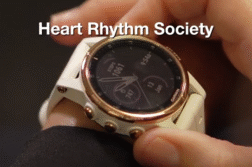TUCSON, Ariz. (Ivanhoe Newswire) — New technology is allowing cardiologists to do life-saving procedures on high- risk patients too sick to undergo open heart surgery. The heart lung catheter system called Tandemlife works to pump blood to keep the body functioning while doctors stabilize patients.
Last year, Ann Martin didn’t feel quite right, so she went to the hospital.
Martin said, “They zipped me in there and did an EKG first which did identify that I was having a heart attack.”
She had angioplasty but didn’t want surgery to relieve her blocked arteries. Then, while getting a second opinion at another medical center she had a second heart attack.
“If she had not come, I don’t think she would have made it this time.” Said Kapil Lotun, MD, Director of the Cardiac Catheterization Lab at Banner-University Medical Center.
Interventional cardiologist Dr. Lotun says Martin had 99 percent blockage on both sides of her heart. Surgery would have been high risk. So although he’d never used it in this procedure, Dr. Lotun says it made sense to use the Tandemlife heart and lung catheter system.
Dr. Lotun explained, “It takes over the function of the heart so that you have blood with oxygen going to the brain, your organs, and your tissues.”
The console powers this pump.
“This is the cannula which is from the vein going to the pump,” Dr. Lotun said.
The pump pulls blood from a vein, oxygenates it and puts the blood back into the body. It allowed Dr. Lotun to place stents and balloons in Martin’s arteries without using a breathing machine or invasive surgery.
“They put in five stents including a y- shaped one. A year later, I’m still going strong.” Martin stated.
She says her arthritis is what limits her activities more than her heart these days. And she feels blessed.
Cardiologists can put the Tandemlife system in place before the procedure for high-risk patients like Ann. But Dr. Lotun says it’s always in the cath lab and can be activated in five to ten minutes if the need arises during other procedures.
Contributors to this news report include: Wendy Chioji, Field Producer; Bruce Maniscalco, Videographer; Cyndy McGrath, Supervising Producer; Hayley Hudson, Assistant Producer; Roque Correa, Editor.
To receive a free weekly e-mail on Medical Breakthroughs from Ivanhoe, sign up at: http://www.ivanhoe.com/ftk
MEDICAL BREAKTHROUGHS
RESEARCH SUMMARY
TOPIC: TANDEMLIFE AVOIDS OPEN HEART SURGERY
REPORT: MB #4487
OPEN-HEART SURGERY: Includes any type of surgery where the chest is cut open and procedures are performed on the muscles, valves, or arteries of the heart. Coronary artery bypass grafting is the most common type of heart surgery performed on adults, in which a healthy artery or vein is attached to blocked coronary artery. This allows the new artery to bypass the blocked one, and bring fresh blood to or from the heart. Sometimes referred to as traditional heart surgery, open-heart is also done to repair damaged or abnormal areas of the heart, or even sometimes implant medical devices to better help the heart beat properly. It is generally done while the patient is under anesthesia, via an 8 to 10 inch cut the surgeon makes into the chest. They must also cut through the breastbone to expose the heart. Sometimes sternal plating is done for people at high risk; this is when the breastbone is rejoined with small titanium plates after surgery.
(Source: https://www.healthline.com/health/open-heart-surgery#procedure)
RISKS: Risks related to open-heart surgery include chest wound infections, higher risk for heart attack or stroke, irregular heartbeat, lung or kidney failure, chest pain and perhaps a low fever, as well as memory loss or fuzziness, blood loss, blood clots and difficulty breathing. Also, there can be a risk of catching pneumonia post-surgery.
(Source: https://www.healthline.com/health/open-heart-surgery#risks)
TANDEMLIFE: TandemLife is a device used to help support cardiac patients in critical condition. It’s possible they are not getting enough blood to the rest of their body, or their heart is not functioning at full capacity. The pump takes up blood, oxygenates it, and pushes it back into the body, almost like a temporary replacement for the heart. It consists of catheters and a pump, attached to an oxygenator. It can be used during a high-risk heart procedure, but also for high-risk patients who have experienced cardiac arrest or who need the extra support through a procedure. With the oxygenator, this pump makes it easier for health professionals to get this device in the nick of time for patients when they are sick and running out of time. The procedure can be completed in about five to 10 minutes, which could be life-saving for cardiac patients.
(Source: Kapil Lotun, MD)
FOR MORE INFORMATION ON THIS REPORT, PLEASE CONTACT:
Jean Spinelli
520-626-2531
If this story or any other Ivanhoe story has impacted your life or prompted you or someone you know to seek or change treatments, please let us know by contacting Marjorie Bekaert Thomas at mthomas@ivanhoe.com




